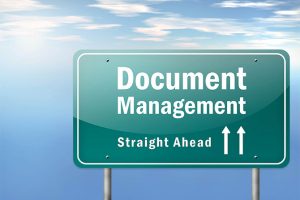By Mike Waterman
Remember when? That is a phrase many of you reading this can identify with. Remember when you would tape six sheets of legal paper together to make a full-page newspaper ad? You would spend hours with your ruler, pencil and current list of inventory to build out the ad for the upcoming run on Sunday.
Remember when you would appraise a car with your NADA, Galves, Kelley or Black Book in your back pocket? I’ll paint the picture — you’re sitting at your desk, flipping through the guidebook figuring mileage adds or deductions and equipment adds. All the while, you’re asking yourself the same questions — Do I need this car? What could I sell it for? I know the Volvo store down the street has a couple — what does he have those priced at?
Then came the internet and websites, and dealers were now able to reach more “ups” more often and MUCH more efficiently. Then came inventory management systems. We could enter the VIN and get a whole slew of information on the vehicle in seconds. Dealers got exponentially better at what they stock, what they pay, how to price and how to compare markets locally, regionally and nationally.
Remember when you would pick up the phone and call several of your friends to “bank” a trade because you needed more money to put the deal together? Remember when you would drive three hours at 4 a.m. to get to the auction right when the gates opened so you could crawl around 80-90 cars, make notes, look up values and maybe buy 10?
Well, those days are finally over. The “Digital” evolution in wholesale is here! What has changed, you ask?
In today’s digital marketplace, many new tools completely changed how you can transact as a business, bringing more trust, transparency and efficiency to the buying and selling process. I will start with the most important part of what we do: buy cars for the front line. This is where most mistakes were made before digitization. First, there is the right car at the wrong price. Those you can survive because, although your average gross will suffer a bit, the car will eventually sell. The second is the wrong car. Why? The wrong car usually comes into stock for two reasons. Most often, we put too much money in it to make a deal and have no wholesale option unless we want to lose money. Plus, our buyers claim it was a “steal” at the auction. Neither are good for your retail front line.
Next, let’s address vehicle trades. Did you know there are hundreds if not thousands of dealers today who have raised their win rates on trades by double digits — and assumed ZERO risk? How is that possible? The new marketplace is thriving online in wholesale. If you want a real offer with a legitimate check attached to trade in, launch the car to thousands of potential buyers and 20 minutes later, have your vehicle’s actual cash value to work your deal. Some dealers even sit with the current owners and watch the auctions together — you can see their excitement as another $100, $200 come in on their car. Each bid pushes them to think about the new car they will be leaving with. More trades with less wholesale loss exposure means higher actual cash value on those trades to win more deals. If you are not playing in the space, you are leaving deals on the table.
For wholesale operation, acquisition and disposition of inventory, there are countless benefits of transacting digitally. When buying vehicles, dealers want access to as much inventory as possible in real-time and want to feel confident in the vehicles’ description. When selling vehicles, dealers want A-lane numbers to have the largest pool of potential buyers to bid and compete on the purchase. We all know 12 bidders will bring more money than three bidders. Transacting digitally opens up the floodgates for your business: Thousands of cars every day are running in digital lanes across the country, and thousands of dealers are bidding, buying and selling.
What should you look for in a digital partner? Trust and transparency is a good place to start. Your top priority should be the quality and consistency of the condition reports. Who is writing them, how are they held accountable, who trained them, who do they work for, who offers the most detailed and complete vehicle descriptions? Inside/outside photos are easy. What about the check engine light, OBD codes, and paint? Have repairs been conducted and how good was the repair quality? What does the engine sound like? Is there a knock at a cold start? How’s the idle? What does the complete undercarriage look like?
Answers to all of these questions should be provided before a buyer hits the “bid” button on any online platform. ACV Auctions checks all of these boxes with its comprehensive and unparalleled True360 reports, Virtual Lift, the industry’s first mobile vehicle undercarriage imaging tool and Audio Motor Profile (AMP) tool, which allows all dealers on the ACV platform to hear engine sounds of vehicles they are considering buying. That is why NJ CAR has partnered with ACV to offer dealers a valuable service.
What guarantees does a buyer have if the vehicle arrives and is NOT as described? Who is on the hook? How does the buyer get help and who do they call? There are providers today who run close to 90% green light and guarantee the car’s description. Shop us all, push us hard. Ask the hard questions and hold us all accountable. Quality condition reports need to be consistent and backed by solid arbitration terms and buyer guarantees. Digital is here and transforming businesses every day. Make sure you do your homework before selecting the platform that works best for your operation.
Mike Waterman is Chief Sales Officer at ACV Auctions. He can be reached at
mwaterman@acvauctions.com
This story appears in Issue 3 2020-21 of the New Jersey Auto Retailer Magazine.









